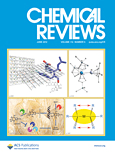
CHEMICAL REVIEWS
Scope & Guideline
Advancing the Frontiers of Chemical Knowledge.
Introduction
Aims and Scopes
- Interdisciplinary Research:
The journal publishes reviews that integrate various branches of chemistry, including organic, inorganic, physical, analytical, and biochemistry, fostering collaboration across disciplines. - Advanced Materials and Nanotechnology:
There is a strong emphasis on the synthesis, characterization, and application of novel materials, particularly nanomaterials, which are pivotal in energy, electronics, and biomedicine. - Catalysis and Green Chemistry:
The journal frequently features reviews on catalytic processes, including heterogeneous and homogeneous catalysis, with a focus on sustainable practices and the development of green chemistry methodologies. - Biochemistry and Chemical Biology:
Papers often explore the intersection of chemistry and biology, including topics like drug design, enzyme catalysis, and the role of biomolecules in various biological processes. - Computational and Theoretical Chemistry:
The journal highlights advancements in computational methodologies and theoretical frameworks that aid in understanding chemical phenomena and predicting material properties. - Electrochemistry and Energy Storage:
Research related to electrochemical processes, including batteries, fuel cells, and renewable energy technologies, is a recurring theme, reflecting the journal’s commitment to addressing global energy challenges.
Trending and Emerging
- Sustainable and Green Chemistry:
There is an increasing focus on sustainable practices, including the development of green synthesis methods and materials that minimize environmental impact, aligning with global sustainability goals. - Machine Learning and Artificial Intelligence in Chemistry:
The integration of machine learning techniques in chemical research is gaining momentum, with reviews exploring their applications in reaction prediction, materials design, and data analysis. - Bioinspired and Biomimetic Materials:
Research on materials that mimic biological systems is trending, particularly in the context of drug delivery, sensors, and smart materials, reflecting a growing interest in biocompatibility and functionality. - Nanotechnology and Energy Applications:
Emerging themes include the development of nanomaterials for energy applications, particularly in solar cells, batteries, and fuel cells, as the demand for renewable energy solutions increases. - Electrochemistry and Energy Conversion:
The journal is increasingly publishing reviews on electrochemical energy conversion technologies, including CO2 reduction and hydrogen production, which are critical for addressing climate change. - Chemical Biology and Therapeutics:
There is a notable trend towards exploring chemical biology, particularly in drug design, targeting disease mechanisms, and the development of novel therapeutic strategies.
Declining or Waning
- Traditional Organic Synthesis:
There has been a noticeable decrease in reviews focusing solely on traditional organic synthesis methods as the field has evolved towards more efficient and innovative approaches such as biocatalysis and photocatalysis. - Conventional Polymer Chemistry:
While polymer science remains important, there is a waning interest in conventional polymer chemistry topics, with a shift towards sustainable and biodegradable materials gaining more attention. - Classical Coordination Chemistry:
Themes related to classical coordination chemistry have seen a decline, possibly due to the rise of more complex and functional materials that emphasize novel interactions and properties. - Inorganic Chemistry without Applications:
Inorganic chemistry studies that do not directly relate to applications in materials science, catalysis, or energy are becoming less frequent, reflecting a trend towards applied research. - Fundamental Spectroscopy Techniques:
Although spectroscopy is crucial, reviews focusing solely on fundamental techniques without discussing their applications in current research contexts are appearing less frequently.
Similar Journals
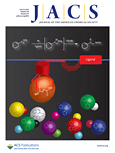
Journal of the American Chemical Society
Connecting Scientists with Cutting-Edge Chemical InsightsJournal of the American Chemical Society (JACS), published by the American Chemical Society, stands as a pivotal publication in the field of chemistry, facilitating the dissemination of significant research findings since its inception in 1879. With an impressive impact factor and esteemed rankings placing it in the Q1 quartile across various categories—including Biochemistry, Catalysis, and Colloid and Surface Chemistry—JACS continues to serve as a vital resource for scientists, professionals, and students alike. Researchers choose JACS for its rigorous peer-review process, ensuring high-quality content that shapes the landscape of modern chemistry. The journal's extensive scope encompasses pivotal advancements and innovative methodologies, reflecting the evolving dynamics of chemical research. With access options being traditional subscription-based, it remains crucial for institutions and individuals to engage with its latest issues to stay at the forefront of chemical science advancement.
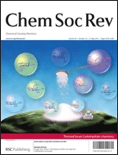
CHEMICAL SOCIETY REVIEWS
Shaping the Future of Chemistry with In-Depth AnalysisCHEMICAL SOCIETY REVIEWS, published by the Royal Society of Chemistry, serves as an essential platform for researchers, professionals, and students in the field of chemistry. Since its inception in 1972, this prestigious journal has maintained its status as a leading publication, currently positioned in the Q1 category for Chemistry (miscellaneous) and ranking #2 out of 408 journals in the field of General Chemistry on Scopus, with an impressive 99th percentile recognition. With a focus on comprehensive reviews that synthesize key advancements and methodologies, it promotes open discussion and critical analysis crucial for driving innovation within the discipline. Although it operates under a subscription model, the journal strives to foster knowledge dissemination among the global chemistry community, ensuring accessibility to cutting-edge research and insights that shape the future of chemical sciences through its extensive array of articles.
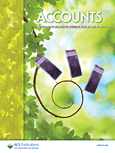
ACCOUNTS OF CHEMICAL RESEARCH
Innovating Connections Between Chemistry and Clinical PracticeACCOUNTS OF CHEMICAL RESEARCH, published by the American Chemical Society, is a premier journal dedicated to advancing the field of chemistry and its applications in medicine. With an impressive impact factor and recognition as a Q1 journal in both chemistry and medicine categories, it ranks among the top-tier publications, exhibiting an outstanding Scopus rank of 8 out of 408 in general chemistry, placing it in the 98th percentile. This journal has been a vital source of innovative and significant research since its inception in 1968, and it aims to provide a platform for high-quality research articles, reviews, and critical essays that bridge the gap between chemical research and clinical implications. While it is not an open-access publication, the insights available in Accounts of Chemical Research are invaluable for researchers, professionals, and students seeking to explore the latest developments and interdisciplinary approaches within the dynamic fields of chemistry and medicine.
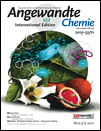
ANGEWANDTE CHEMIE-INTERNATIONAL EDITION
Connecting Researchers with the Latest in Chemical ResearchANGEWANDTE CHEMIE-INTERNATIONAL EDITION, published by WILEY-V C H VERLAG GMBH, stands as a leading journal in the fields of Chemistry and Catalysis, holding a prestigious position with a Q1 ranking in both categories as of 2023. With an ISSN of 1433-7851 and an E-ISSN of 1521-3773, this esteemed publication has been an invaluable resource for the global scientific community since its inception in 1962. The journal's impact is further underscored by its remarkable Scopus rankings, where it occupies the 13th place among 408 journals in General Chemistry and the 4th place among 68 in Chemical Engineering - Catalysis, marking it in the 96th and 94th percentiles, respectively. Although it does not offer Open Access, ANEWANDTE CHEMIE-INTERNATIONAL EDITION remains essential for researchers, professionals, and students seeking to stay abreast of cutting-edge developments and innovations in chemical sciences. Its comprehensive scope and rigorous peer-review process ensure that only the highest quality research finds its way to publication, contributing significantly to the advancement of chemistry worldwide.
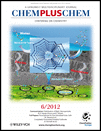
ChemPlusChem
Fostering Scientific Dialogue for a Brighter Chemical FutureChemPlusChem is a premier journal published by WILEY-V C H VERLAG GMBH, dedicated to the vibrant field of chemistry. With an ISSN of 2192-6506 and an impressive Q1 ranking in Scopus's 2023 category for miscellaneous chemistry, this journal serves as a significant platform for the dissemination of high-quality research and innovative findings. Since its inception in 2012, ChemPlusChem has fostered interdisciplinary collaborations, encapsulating a wide array of topics within chemistry that facilitate scientific advancement and education. The journal features a robust open access system, enabling extensive visibility for authors while providing easy-to-access resources for researchers, professionals, and students globally. Located in Weinheim, Germany, ChemPlusChem reflects international standards and ambitions, striving to enrich the global scientific community through rigorous research and engaging scientific discourse.
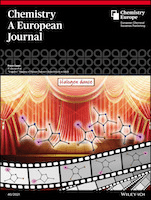
CHEMISTRY-A EUROPEAN JOURNAL
Leading the Charge in European Chemical ScienceCHEMISTRY-A EUROPEAN JOURNAL is a premier academic journal published by WILEY-V C H VERLAG GMBH, specializing in the diverse fields of chemistry and catalysis, with a distinguished focus on organic chemistry. Since its inception in 1995, the journal has established itself as an authoritative resource for researchers and professionals, currently classified in Q1 in Chemistry (miscellaneous) and Organic Chemistry, reflecting its high-quality contributions to the scientific community. With an impressive impact factor and robust Scopus rankings—#33 in Organic Chemistry and #26 in Catalysis—this journal serves as a vital platform for disseminating innovative research findings and critical advancements in chemical sciences. Although not an open-access journal, it provides valuable access options for institutions, ensuring wide reach and engagement within the scientific community. As it converges into 2024, CHEMISTRY-A EUROPEAN JOURNAL remains a key resource for anyone dedicated to advancing the frontiers of chemistry research.

HELVETICA CHIMICA ACTA
Pioneering Insights in Biochemistry and BeyondHELVETICA CHIMICA ACTA, published by WILEY-V C H VERLAG GMBH, stands as a pivotal journal in the fields of chemistry and chemical research. Established in 1918, this esteemed journal spans a diverse array of topics, including biochemistry, catalysis, drug discovery, inorganic and organic chemistry, as well as physical and theoretical chemistry. With influence reflected in its noteworthy Q2 and Q3 quartile rankings across these categories as of 2023, HELVETICA CHIMICA ACTA continues to capture the interest of the global scientific community. Although not an open-access journal, it remains accessible through various academic institutions, ensuring broad reach and collaboration opportunities. Researchers, professionals, and students alike will find its meticulously peer-reviewed articles critical for advancing knowledge and fostering innovation within the chemical sciences. As the journal converges toward 2024, it remains committed to publishing high-quality, impactful research that supports the evolution of chemistry across its multifaceted disciplines.

Chemistry-Switzerland
Exploring the Frontiers of Inorganic, Organic, and ElectrochemistryChemistry-Switzerland is an esteemed, fully Open Access journal published by MDPI, dedicated to advancing research in a broad spectrum of chemistry disciplines. Launched in 2019, the journal has established itself within the academic community, particularly as it spans critical areas such as inorganic and organic chemistry, as well as electrochemistry. Recognized for its contributions, it has achieved notable rankings, including Q2 status in Chemistry (miscellaneous) and Inorganic Chemistry, and Q3 standing in Electrochemistry and Organic Chemistry for 2023. With a commitment to disseminating high-quality research, Chemistry-Switzerland serves as an invaluable resource for researchers, professionals, and students aiming to share their discoveries with a global audience. Located in Basel, Switzerland, this journal facilitates seamless access to cutting-edge research, fostering innovation and collaboration within the vibrant field of chemistry. With this dynamic platform, the journal aims to continue its trajectory of growth and impact, inspiring the next generation of chemists.

JACS Au
Driving discovery in analytical and theoretical chemistry.JACS Au, published by the American Chemical Society, is a premier open access journal dedicated to advancing research in the rapidly evolving fields of analytical chemistry, organic chemistry, and theoretical chemistry. Since its inception in 2021, JACS Au has quickly established itself as a leading platform for high-quality research, reflected in its Q1 rankings across multiple categories for 2023, including Organic Chemistry and Analytical Chemistry. The journal focuses on innovative methodologies and applications that drive the discipline forward, making it an essential resource for researchers, professionals, and students alike. With an impressive Scopus ranking, consistently placing in the top tiers of its categories, and offering a broad range of access options for its readership, JACS Au aims to foster collaboration and disseminate transformative ideas that impact the global scientific community. Exploring diverse topics within chemistry, this journal provides a vital conduit for sharing groundbreaking research and enhancing scientific dialogue.
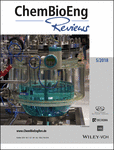
ChemBioEng Reviews
Advancing the Frontiers of Biochemical InnovationChemBioEng Reviews is a premier academic journal dedicated to advancing the fields of biochemistry, bioengineering, and chemical engineering. Published by WILEY-V C H VERLAG GMBH, this journal serves as an essential platform for researchers and professionals seeking to disseminate groundbreaking insights and innovations. With a remarkable impact factor and a solid reputation, it is ranked in the top quartile (Q1) across multiple disciplines, including Biochemistry, Bioengineering, and Industrial and Manufacturing Engineering. The journal's comprehensive scope covers the synthesis, analysis, and application of bioengineered solutions, making it a vital resource for anyone involved in process chemistry and technology. With an unwavering commitment to high-quality scientific discourse from 2014 to 2024, ChemBioEng Reviews is not only pivotal for the academic community but also contributes to industry advancements in filtration, separation processes, and the intersection of chemical and biological engineering.